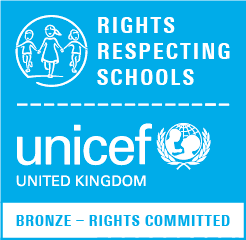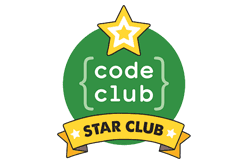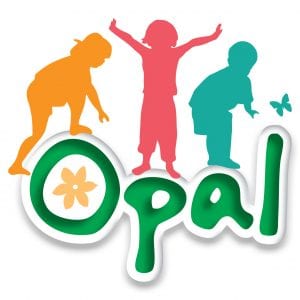Reading and Phonics at The Grove Primary School
The Government strongly recommend the use of synthetic phonics when teaching early literacy skills to children. Synthetic phonics is simply the ability to convert a letter or letter group into sounds that are then blended together into a word.
At The Grove Primary School, we use Read Write Inc Phonics (RWI) to give your child the best possible start with their Literacy development. Fiona is our Read Write Inc lead teacher so if you have questions about RWI please contact the school office and Fiona can get back in touch with you.
What is Read Write Inc?
Read Write Inc (RWI) is a phonics complete literacy programme which helps all children learn to read fluently and at speed so they can focus on developing their skills in comprehension, vocabulary and spelling. The programme is designed for children aged 4 to 7.. At The Grove Primary School, we begin the programme in Reception and we continue teaching RWI to children beyond the age of 7, as we use a stage not age approach.
How will RWI be taught?
All children are assessed regularly by our RWI lead teacher. From these assessments children are grouped into stages, where they work with peers on the same stage.
Reception
When appropriate, children will be introduced to the initial sounds in short five minutes sessions.
In Reception, all children will learn how to ‘read’ the sounds in words and how those sounds can be written down.
Reading
The children:
- Learn 44 sounds and the corresponding letters/letter groups using simple picture prompts (see below)
- Learn to read words using Fred talk and sound blending
- Read from a range of storybooks and non-fictions books matched to their phonic knowledge
- Work well with partners
- Develop comprehension skills in stories by answering ‘Find It’ and ‘Prove It’ discussion questions
Writing
The children:
- Learn to write and form the letters/letter groups which represent the 44 sounds with the help of fun phrases
- Learn to write words by using Fred Talk
- Learn to build sentences by practising sentences out loud before they write
Talking
The children
- They work in pairs so that they:
- Answer every question
- Practise every activity with their partner
- Take turns in talking and reading to each other
- Develop ambitious vocabulary
Progressing through the stages
Children follow the same format as Early Years but will work on complex sounds and read books appropriate to their reading level. Daily sessions of RWI phonics last 30 minutes.
Children will be taught how to read as follows:

These are the sounds we use to speak in English. Children initially begin using pictures for each sound, this will help children recognise the sound and then form the shape of the sound.
We use pure sounds (‘m’ not’ muh’,’s’ not ‘suh’, etc.) so that your child will be able to blend the sounds into words more easily
Fred Talk

Fred the Frog puppet plays an important role in our Read Write Inc lessons. Fred is only able to speak in sounds, not whole words. We call this Fred Talk.
For example, Fred would say m-a – t we would say mat. Fred talk helps children read unfamiliar words by pronouncing each sound in the word
one at a time. Children can start blending sounds into words as soon as they know a small group of letters well. During lessons children are taught to hear sounds and
blend them together in sequence to make a word. We start with blending oral sounds, then progress to reading the letters and blending them together to read the
word.
The following video is an example of blending sounds with Fred. https://www.youtube.com/watch?v=dEzfpod5w_Q
The children are taught the sounds in 3 sets.
Step 1:
Set 1 Sounds are taught in the following order together with rhymes to help children form the letters correctly and instantly recognise sounds ready for blending.
| Set 1 | |
| Sound | Rhyme |
| m | Down Maisie then over the two mountains. Maisie, mountain, mountain. |
| a | Round the apple, down the leaf. |
| s | Slide around the snake |
| d | Round the dinosaur’s back, up his neck and down to his feet. |
| t | Down the tower, across the tower, |
| i | Down the insects body, dot for the head. |
| n | Down Nobby and over the net. |
| p | Down the plait, up and over the pirates face. |
| g | Round the girls face, down her hair and give her a curl |
| o | All around the orange |
| c | Curl around the caterpillar |
| k | Down the kangaroos body, tail and leg |
| u | Down and under the umbrella, up to the top and down to the puddle |
| b | Down the laces, over the toe and touch the heel |
| f | Down the stem and draw the leaves |
| e | Slice into the egg, go over the top, then under the egg |
| l | Down the long leg |
| h | Down the horse’s head to the hooves and over his back |
| sh | Slither down the snake, then down the horse’s head to the hooves and over his back |
| r | Down the robot’s back, then up and curl |
| j | Down his body, curl and dot |
| v | Down a wing, up a wing |
| y | Down a horn, up a horn and under the yak’s head. |
| w | Down, up, down, up the worm. |
| th | Down the tower, across the tower, then down the horse’s head to the hooves and over his back |
| z | Zig-zag-zig, down the zip. |
| ch | Curl around the caterpillar, , then down the horse’s head to the hooves and over his back |
| qu | Round the queen’s head, up to her crown, down her hair and curl |
| x | Cross down the arm and leg and cross the other way |
| ng | A thing on a string |
| nk | I think I stink |
At this stage we do not use the letter names
Step 2:
The children are then taught Set 2 Sounds – the long vowels. When they are very confident with all of set 1 and 2 they are taught Set 3 Sounds.
| Long vowel sound | Set 2 Speed Sound cards
Teach these first |
Set 3 Speed Sound cards | |
| ay | ay: may I play | a-e: make a cake | ai: snail in the rain |
| ee | ee: what can you see | ea: cup of tea | e: he me we she be |
| igh | igh: fly high | i-e: nice smile | |
| ow | ow: blow the snow | o-e: phone home | ao: goat in a boat |
| oo | oo: poo at the zoo | u-e: huge brute | ew: chew the stew |
| oo | oo: look at a book | ||
| ar | ar: start the car | ||
| or | or: shut the door | aw: yawn at dawn | |
| air | air: that’s not fair | are: share and care | |
| ir | ir: whirl and twirl | ur: nurse for a purse | er: a better letter |
| ou | ou: shout it out | ow: brown cow | |
| oy | oy: toy for a boy | oi: spoil the boy | |
| ire | ire: fire fire! | ||
| ear | ear: hear with your ear | ||
| ure | ure: sure it’s pure? | ||
Alien words
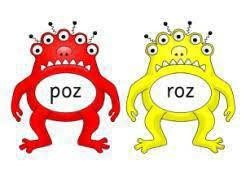
As children build up their knowledge of sounds they are able to apply their decoding skills to any unfamiliar word may it be real or nonsense. During lessons
each day children will practice their decoding skills by sounding out the letters in ‘Alien words’. Children are unable to rely on existing
knowledge of real words, and instead have to use their letter-sound knowledge. This is an important part of the Phonics Screening Test
children complete at the end of Year 1.
Step 3:
Within all the RWI sessions/books children will be exposed to red and green words to learn to help them to become speedy readers. Red words are words that are not easily decodable and challenge words to extend children’s vocabulary. Green words are linked to the sounds they have been learning and are easily decodable (please see below).
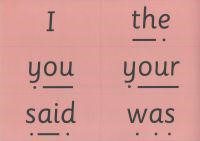
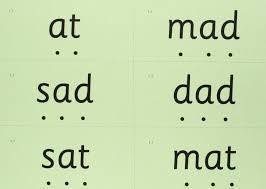
Dots and dashes represent the sound each letter makes.
During the RWI session children will read the book three times and at each new reading they will have plenty of opportunities to practise using their developing comprehension skills. You may have heard your child talking about ‘hold, edit or build a sentence’.
To help at home:
Your child will start to bring books home when they are confident readers, relating to their reading stage. You will find your child will bring home a phonics based book, this will aid application, speed and fluency- developing speedy reading! Following on from this, they will bring a library book which will begin to enrich their reading, which will require decoding skills. Your child may not be able to read this book alone. It is a book to be shared.
Children in Lower and upper Key Stage 2 (Year 3-6) primarily use the Oxford Reading Tree scheme of books but within each class there is a small library where books both fiction and non-fiction can be accessed. We also have a well stocked library on our Library Bus!

Reading with your child
Reading confidently and with good understanding is a skill that our learners need for life.
Please don’t try to do all of these every time you listen to your child read. The following is a selection of questions and activities that are to help you in guiding your child’s reading and understanding. The questions are examples only and should not be asked, in sequence, every time your child reads. Questions should be appropriate to the text.
Before you start
- Check that there are no distractions, e.g. television, music, etc
- Make sure that your child is comfortable and that you can interact with him/her.
- Discuss the cover and appearance of the book:
- What is the book’s title?
- What is the story about?
- Do you like this book?
- If the child has already started the book, ask about the main events of the story so far.
During Reading
- Remind your child of the different ways they can work out words on which they are stuck:
- Phonetic: sounding out each phoneme.
- Contextual: reading the rest of the sentence in order to find a word that gives the sentence sense.
- Interact with your child rather than simply hear them read. They will be more responsive to your questioning if they know that you are interested.
- Give plenty of praise for your child’s achievements.
- Stop at appropriate places in the text to ask questions about the plot and characters. Ask your child to make predictions about what might happen next.
- Try to ask questions that will help your child to think about what they have read. Questions such as ‘Can you think of another word/way to describe the character?’ will help them to use their vocabulary.
- If your child stumbles over a word or mispronounces one then allow them some time to self-correct.
- Encourage your child to decipher new or unfamiliar words, using the structures or techniques that they have already learned.
- Remember that reading is not just about decoding words but also about fluency and expression.
After Reading
- Discuss what has just been read
- Did you enjoy it? Why?
- Did you have a favourite part or a part you didn’t like?
- Did you have a favourite character? Was there a character you didn’t like?
- Was the story happy / funny / sad / scary / exciting? Why?
- Did the story end how you thought it would?
- Can you think of another ending?
- Ask your child to read a few words from the text, out of context.
- Check understanding of vocabulary, particularly new words in the text.
Please bear in mind that books that children are given by school will be for different purposes, including development, challenge and consolidation. Therefore, if a book appears to be ‘easy’, there is a reason behind it being in their bag.
Experience of different types of book is important, e.g. fiction, non-fiction, poetry, comics, magazines, etc. We will provide a variety of texts and genres for your child to read.
Reading should not just take place at a set time and place. Don’t forget to ask your child to read suitable words from the environment, e.g. signs, labels, etc. It is not just reading books that will help your child’s progress.
For the more reluctant readers (both boys and girls): give them plenty of encouragement. Some children take to reading more naturally than others and will be happy to discuss what they have found. Others will need greater prompting to talk about what they have found. E-readers and audio books might encourage older pupils to read. It is important to bear in mind that there is no such thing as a child who hates reading; only a child who hasn’t found the right book.’
We are also here to help, if you have any questions.
But most importantly, please have fun reading!
Adobe Reader
You may need a product like Adobe Reader (free download) to view our PDF documents on our website.

